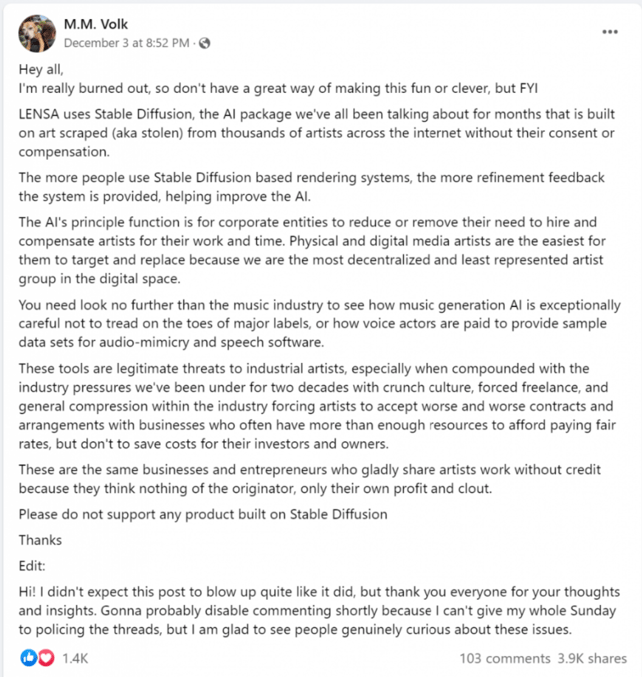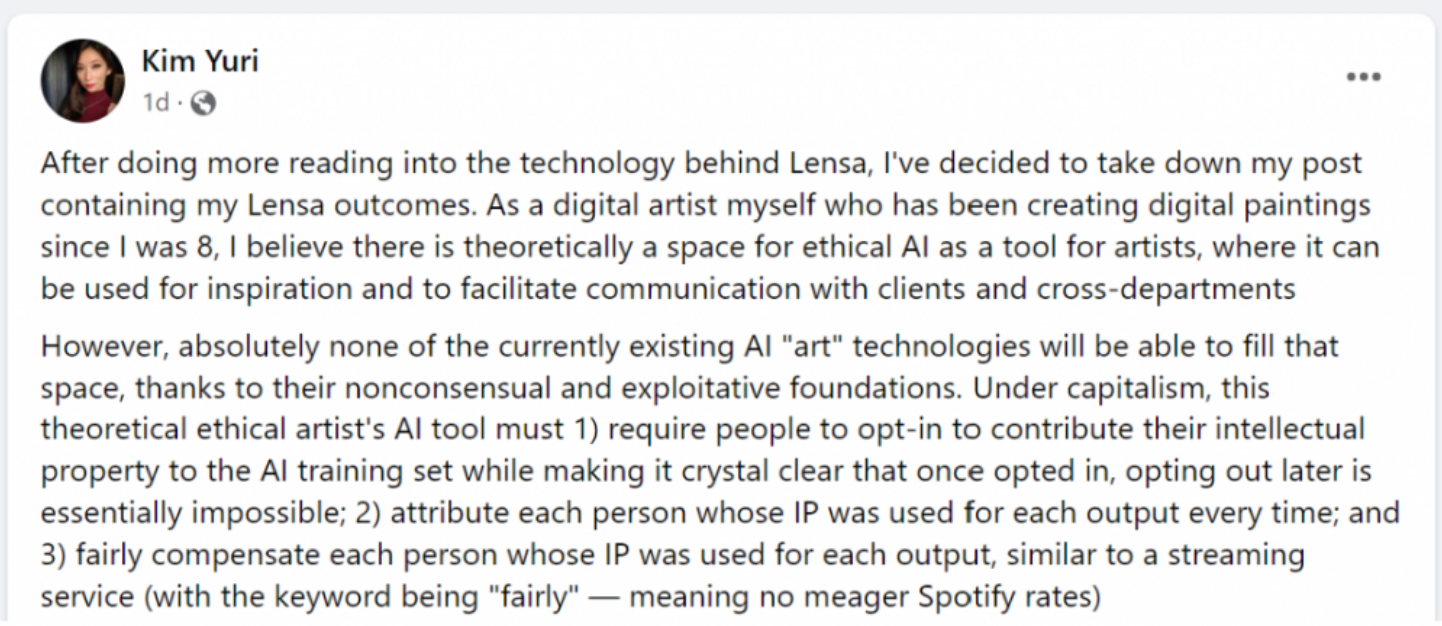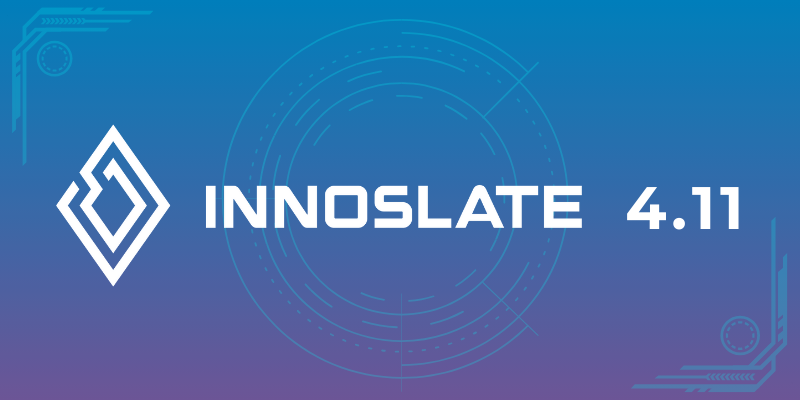SPEC Innovations Introduces Innoslate AI Chat
Manassas, VA; 7-18-2023: SPEC Innovations, the developers of the first cloud-native, model-based systems engineering and requirements management...
.png)
Artificial Intelligence, more commonly referred to by its acronym, AI, is intelligence shown by machines rather than by humans or animals. AI currently has social media in its grasp. The world is talking about the capabilities of AI within digital art, whether it be positive or negative.
Social media users across the world are using the app, Lensa AI, to post AI-created photos of themselves from different eras and magical-looking themes. The app uses a minimum of 10 photos provided by the user to render their selfies into art. For just $3.99, you can own 50 images of yourself as you’ve never seen before. However, with all trends on the internet, the popular app has created controversy.
Digital artists are coming together to share how this could hurt them and their businesses. For such a low cost and an almost immediate product, it could potentially mitigate the commission of digital art for many who want portraits. There are claims that the art is stolen, which is even more of a blow to the digital artist community, who are worried their friends will no longer support them when their art is much more expensive and timely.

Others are using this trend to offer ideas as to how AI can exist in their world in an ethical way. The current laws in place cannot keep up with the intelligence, but there needs to be legislation put in place to ensure apps like Lensa are providing credit, clarity, and compensation.

This controversy has started the dialogue about what level AI can exist for people to continue to thrive in their areas of work and feel safe. This is a conversation that has loomed for a long time but will only grow as AI becomes more and more intelligent.
SPEC Innovations uses a form of AI, called Natural Language Processing, for powerful quality analytics in its cloud-native model-based systems engineering software, Innoslate.
The quality of requirements is determined by running several automatic checks against each of the requirements in a document. A Quality Score is then determined accordingly and suggestions are provided for how to improve each requirement. The quality check does the work that would normally take hours to days for a quality manager to review instantly saving organizations time and money.
Traceability assist and suspect assist work similarly by utilizing Natural Language Processing. Traceability Assist’ will automatically identify likely relationships using pre-trained machine learning models. The suggested relationships will be highlighted in green. The darker the color green, the higher confidence a relationship should be present. ‘Suspect Assist’ will automatically identify related entities which have few similarities and a low confidence of correctness.
Everyday systems grow incrementally in complexity and size, making quality management a challenge. Professors at some of the world’s leading research institutions developed formal representations of a well-defined system architecture, known as heuristics to determine quality. With the power of NLP, Innoslate developed Intelligence View to manage some of the most complex systems' overall quality. From identifying entities with the same name or entities that contain ambiguous words or ensuring that actions contain a child or parent, each input/output generates an action, and the list goes on. Learn more about all 67 system quality analysis checks in Innoslate’s Intelligence View.
Systems engineering and requirements management still require actual human intelligence to ensure proper data and to ultimately make the decisions on how to improve the system data after receiving the AI suggestions. This application of AI proves that its use can be used ethically to improve the safety and quality of complex systems and products.
It’s clear this is just the beginning of the conversation about AI and what amount is beneficial to our world. Although Lensa’s digital art is bringing joy to many, there are many downsides to the trend like the effects it will have on digital artists and the user’s intellectual property. AI can help many as it does in Innoslate, but it is important to continue the dialogue and be aware of the ethics before jumping on trends.
Follow us on social media for daily inspiration, thought-provoking discussions, and behind-the-scenes glimpses of SPEC Innovations. Join our thriving online community!
Have questions about model-based systems engineering or requirements management? Talk to an expert and see how Innoslate can streamline your projects from start to finish.
.png)
Manassas, VA; 7-18-2023: SPEC Innovations, the developers of the first cloud-native, model-based systems engineering and requirements management...
%20(200%20%C3%97%20100%20px)%20(800%20%C3%97%20400%20px)%20(20).png)
SPEC Innovations had the pleasure of sponsoring George Mason University’s Space Day on September 10th! The event was free for everyone of all ages...

In the rapidly evolving landscape of systems engineering and project management, artificial intelligence (AI) is no longer a luxury—it’s a necessity....